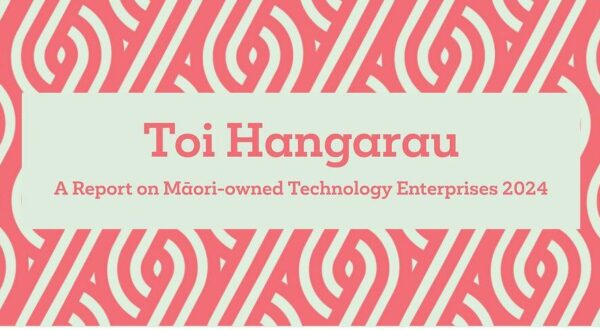It began with lot of hype and speculation, now the m-commerce revolution is rapidly gathering momentum. If you want to stay ahead of your competition, examine your existing communication strategy and seriously consider some mobile options that allow staff to access both voice and data in the field. The technology is finally up and running, the mobile networks are getting into their stride, the time to act is now. Business growth is coming via cellphone screen near you.
Pushing up personal productivity
The arrival of Telecom’s CDMA (027) and Vodafone’s GPRS (029) networks means that business people can now have virtual office on their mobile phone. Outlook information can be routed to phones, PDAs or laptops without the need for wires. Email, calendar, contact and ‘to-do’ information now pops up on phone screens.
Mobile email solutions (such as Me-Mail) allow executives to send and review messages virtually anywhere, even while stuck in traffic, eliminating the need to return to backlog of messages when they get back to their office. According to the October 2001 issue of The Economist, British employees spend on average two hours per day away from their desks and return to backlog of emails that can take up to 45 minutes to clear. Here in New Zealand it’s reported that executives spend an average of 112 minutes per day processing email, 16 minutes less than the average time spent in face-to-face meetings. It was only matter of time before email became totally pervasive.
Doesn’t it make sense that when your sales staff meet customers face to face they should have as many data, text and voice services available at the push of button? device that delivers email, voice mail and text information in the field has to be the way to go, and there are lot of these devices entering the market.
Vodafone’s Alison Sykora lists the following productivity enhancing communication services now available on mobile device near you.
* Web2Txt. “This is fast simultaneous dissemination of data to your whole workforce, in just one click. It’s simple, efficient and easy with reply paths and receipt logs, and leaves pagers for dead!”
* CRM, Field Force Automation (FFA) and Sales Force Automation (SFA) software now delivers vital information to mobile devices, such as customer databases, service records and parts information. “Invoicing and ordering can now take place on the run, allowing more time to make extra client calls.”
* In dispatch situations, order tracking information can now be captured quickly and reliably in real time. “Ninety-five percent of all dispatch queries are about the package whereabouts. With real time tracking you can tell them exactly where it is.”
* Enhanced voice mail. “You no longer need to ring the receptionist or your PA for messages, instead you simply get text message of calls. Even in meeting you discreetly know who has rung.”
All of these examples boost productivity and get more work done in the field. More people in the field also means you can cut back on desk space and in turn, office rental. Garry Mitchell, corporate data manager for Telecom Mobile, agrees that the introduction of mobile data services has provided significant number of benefits for business users. “For example, remote wireless access to company LAN, via laptop or handheld PC in some instances can be at speeds faster than existing wireline connections.
“Mobile costs can also be driven down. Hotel communication charges, for instance, can be expensive based on time connected. However, with wireless packet technologies you pay only for the data transmitted”.
Blurring the boundaries
According to Dave Georgetti, general manager of Sony Ericsson, the basic differentiators haven’t really changed when it comes to cellphone selection. “People still value brands which are perceived as quality, along with compact size, good design, excellent reception/signal strength, talk/standby time, and reliability. Now there are few more optional extras, such as GPRS/CDMA 1X capability, Bluetooth connectivity, or full colour display,” he says.
Some phone manufacturers were little slow out of the starting gate when it came to developing their CDMA- and/or GPRS-compliant handsets, which is why some previously unheard of (in this market) brands suddenly came to the fore, such as Kyocera and Samsung. Of course, one manufacturer that was light years ahead of the rest in combining PDA and mobile phone was Finland’s Nokia. Its Communicator (which works on Vodafone’s GSM network) has been around number of years, and the latest version, with colour screen, is immensely popular with European business people.
Such hybrid phones, that offer combined phone and PDA functionality, are tipped to become more popular as the year progresses. Certainly, email is helping to converge the two technologies.
Meanwhile PDAs have become much more than just ‘static’ digital diaries, says Rocom Wireless computing consultant Ben Etherington. “The power and ease of use of PDAs, along with their connectivity and more competitive pricing, is making them essential business tools.”
Etherington advises cellphone buyers to make their selection based on the key purpose for which they need to use it. “That is, if they want to connect it up to PDA or laptop, does it have data capability? Also, does the network provider offer the necessary services and speed?”
Considering future uses for your mobile phone, and not just today’s, is more good advice from Telecom Mobile’s Mitchell. “Look at the features that are, or could be, important to you and your business. Don’t upgrade just because new model is available, upgrade because it offers real benefits.”
Vodafone’s Sykora is strong proponent of wireless internet access. “You need WAP access, which is simply mobile’s equivalent of ‘www’. Then you need to understand whether you want to be charged for time on network or usage of network.” Sykora says that the new networks’ main point of difference is charging for bytes sent and/or received. “Can you read your email without being charged for the time you spent reading it? If you want to be charged on time then standard WAP phone will do the trick. But if you want to be charged for bytes, then the new data networks are the go,” she explains.
Mitchell says there are major differences between the networks and it’s important to cut through the hype and get sound advice. “Many of the major benefits of the networks are from wireless data perspective,” he says. “While handsets now have additional features and improved voice clarity and services, the major technology advances have been in the sharing of data.”
Full speed ahead
Now that the new networks are established, raft of new mobile devices and terminals will follow, along with mobile internet applications and services.
Mitchell says that while the performance of both networks from speed perspective is fairly equal, an enhancement to the CDMA network (CDMA 1X) will boost that network’s peak speeds up to 153Kbps, with average speeds of 40 to 50Kbps predicted.
Faster speeds will enable such things as mobile video, but while it’s easy to get confused by all the puffery surrounding tomorrow’s developments, Vodafone’s Sykora urges people not to wait. “Gain the efficiencies and competitive advantage now, the new data networks are the catalysts to move.
“There has been lot of hype written by manufacturers, operators and technos, but few promises have been delivered on,” she adds. “There is uncertainty in the marketplace about picking the winning technology. The key is to focus on your business needs, not the technology, and act now.”
Georgetti from Sony Ericsson agrees that the transfer of greater volumes of data, faster, is where the future of wireless is heading. “I imagine we’ll see more of what we do today on multimedia desktop being made available on mobile devices, for example large email attachments, streaming music and video, videoconfere











